Introduction
27 July 2023 marked the 70th anniversary of the Korean War Armistice. The Korean War lasted for three years – from 25 June 1950 to 27 July 1953. When it ended, no peace treaty was signed but a truce was reached, leaving the Korean Peninsula fragmented and the two sides technically in conflict till now. The truce that stopped the bloodshed in the Korean War turned 70 years old on 27 July. The two Koreas – North and South - marked the anniversary in starkly different ways, underscoring their deepening nuclear tensions. This makes this commentary relevant to examine what the celebration means for the two sides and the region.
There were countries, besides the two sides of the Korean Peninsula that were involved in the Korean War. The US, the Soviet Union and China were party to the two combatants at war. The style of celebration of the two sides has been different every year since then.[1]
Background
The genesis of the Korean War was rooted in ideological grounds on the onset of the Cold War when the Communist camp championed by then Soviet Union and China were pitted against the US that championed democracy. Each side was trying to expand its sphere of influence. That left the world divided into two blocs.
The Korean War broke out when a Soviet backed Communist North invaded the pro-US southern territory of the Korean Peninsula in 1950, leaving to one of the most harrowing conflicts of the 20th century. That set the tone of the Cold War in Asia. In the initial days of the War, America was naive to describe the Communist invaders as little more than “bandits”. That was a clear failure in assessment of the strength of the Communists. The War Museum in Korea in Seoul, which the present author had a chance to visit in October 2011, clearly depicts that the Communist forces had already made advance into more than half South of the present South Korea. This suggests that America failed to judge the strength of the Communist forces in the initial phase and therefore was a late responder. As the War assumed intensity, civilians from both sides were massacred and rival villagers were slaughtered. The US-led UN forces suffered a crushing defeat when the North Koreans swept the peninsula in 1950, occupied Seoul, before they were pushed back to the north.
Between 2 to 3 million people, including 36,500 US troops were estimated to have been killed. When China intervened on behalf of the North, it led to a stalemate between the two sides. The fighting was halted along the 38th Parallel Line at Panmunjom. When a truce but no formal peace treaty was reached, leaving the two Koreas technically still at war, the Demilitarised Zone (DMZ) at Panmunjom remained as the dividing line between the two Koreas. Though called demilitarised, the DMZ continues to remain as heavily militarised border as the author saw himself during his visit in 2011. The War Museum in Seoul documents the history of the Korean War in multimedia exhibits, black-and-white documentary footage, and artefacts such as weapons, uniforms, and maps. According to official South Korean government statistics, South Korea suffered mass civilian and military casualties: 137,899 South Korean soldiers killed in action, 450,742 wounded in action, and 32,838 missing or captured as prisoners of war.
This year, 27 July started as a way to commemorate and recognise the peace treaty preparation that ultimately triggered a cease-fire in a three year long-standing war. For the US, the Korean War is a significant chapter in US history as ideological differences were put to test but ended neither with victory nor defeat. The casualties for the US were heavy. Approximately 50,000 American troops died in the conflict, over 100,000 wounded, and thousands of others were held captive as prisoners of war.
Since the end of the War, one aspect has remained constant. Each year the US and South Korea observe National Korean War Veterans Armistice Day on 27 July. The Korean War remains as a significant Chapter in American history.[2] Like India that was colonised by the British who ruled for 200 years and was preceded by the rule by Mughal invaders, Korea was too colonised by Japan for 35 years from 1910 to 1945 when Japan was finally defeated in World War II. Similarly, India was split into India and Pakistan on religious grounds and Korea on ideological grounds. Tensions that both India and Korea face continues but for different reasons. The historical parallel between the two sides ends here.
The Current Narrative of Hostility
Since the end of the War, while the historical issues continue to haunt ties with South Korea, the abduction issue between Japan and North Korea remains unresolved. Hostilities between the North and South remain sour and have escalated in recent years over North Korea’s nuclear and missile development programmes and threat to use against South Korea. North Korean ruler Kim Jong-un remains paranoid and regime survival remains paramount in his policy discourse. As the third generation dynastic ruler, Kim Jong-un has threatened time and again to use nuclear weapons should fighting begin again. The 70th anniversary of the Korean War is relevant in this context that deserves critical examination.
While the celebrations of the event by the two Koreas were starkly different, what attracted world’s attention was Pyongyang received two high-profile delegations from Russia and China during the celebration. Kim Jong-un welcomed Russia’s Defence Minister Sergei Shoigu in the first high-level talks for North Korea since the start of the Covid-19 pandemic to signal fresh engagement with key partners. Sergei Shoigu led the delegation and handed Kim a signed letter from Russian President Vladimir Putin and discussed topics including mutual defence.[3] He also met North Korea’s Defence Minister Kang Sun-nam.
The celebration of the event by the two sides was starkly different. While North Korea invited delegations from Russia and China to commemorate the armistice which it sees as a victory in the Grand Fatherland Liberation War and was capped by a giant military parade in Pyongyang to showcase Kim’s most powerful, nuclear-capable missiles designed to target neighbouring rivals and the US mainland, President of South Korea Yoon Suk-yeol invited dozens of foreign war veterans to honour the fallen soldiers of the 1950-53 conflict which killed and injured millions and set the stage for decades of animosity among the Koreas.[4]
There remains an uneasy peace since the Armistice was reached. Bilateral ties have remained hostage to South Korean joint military exercises with the US which North Korea sees as rehearsal for eventual invasion and North Korea’s response has been nuclear and missile launches, punctuated by verbal diatribes and threats. On its side, the US responds to “end” Kim’s regime if he dares to launch a pre-emptive nuclear strike on South Korea and the US. Both sides of the Korea see each other as existential threats.
The celebration of the 70th anniversary becomes significant for another reason. While Kim continues to expand aggressively his nuclear arsenal which he sees as guarantee for survival, he not only remains reticent to dialogue offer from the US but continues to deepen cooperation with allies like China and Russia, both of which have their own issues with the US over regional influence. Pyongyang would be further irked when the US, Japan and South Korea announced to hold the trilateral summit to strengthen security cooperation on 18 August 2023 at Camp David Presidential retreat near Washington.[5] The three leaders are expected to discuss ways to expand trilateral cooperation across the Indo-Pacific and beyond, and address the threat posed by North Korea’s provocations. They are also expected to discuss how to advance their shared vision on global and regional security challenges, the rules-based international order and economic prosperity.
So, when Russian delegation led by Defence Minister Sergei Shoigu was received by senior North Korean officials including Defence Minister Kang Sun Nam, China’s mid-level official Li Hongzhong of the Communist Party received equal levels of reception when he arrived. Kim Jong-un watching the massive military parade with tanks and missiles in display was the biggest accomplishment that Kim could show to his domestic audience for the anniversary.
There was a clear discomfort on Kim’s part when the US dispatched the nuclear-powered ballistic-missile submarine to Busan. He realised his ability to counter is limited and therefore thought of a combined response with China and Russia, which is why he gave royal treatment to the delegation from Russia and China during the anniversary celebration event.
While Sergei Shoigu’s was the first Moscow’s top defence official to visit North Korea since the 1991 break-up of the Soviet Union, the Chinese delegation was the first since the Covid-19 pandemic. What make their attendance at the parade displaying North’s nuclear-capable missiles banned by the UNSC significant because both Russia and China sought to distance themselves from their neighbour’s nuclear weapons and ballistic missile development in previous years. The parade included North Korea’s latest Hwasong-17 and Hwasong-18 intercontinental ballistic missiles, both having range to strike anywhere in the US.
During the talks with Kim, Shoigu praised North Korean military as the strongest in the world. The two discussed strategic security and defence cooperation.[6] The US has accused North Korea of providing weapons to Russia for its war in Ukraine. Both Russia and China have thwarted US-led efforts to strengthen UNSC sanctions on Pyongyang over its intensified missile testing activity. This underscores a divide between the council’s permanent members. The Ukraine war deepened this divide further. The US has urged Russia and China to play a more constructive role in defusing tensions and bringing back to dialogue.[7] That is unlikely to happen anytime soon.
For South Korea, the most important outcome of the armistice was the subsequent signing of the US-South Korea Mutual Defence Treaty. In view of the increasing tensions in the Peninsula, Seoul sought stronger US assurance to strengthen extended deterrence. The Washington Declaration addressed to this issue.
Attending the armistice ceremony in South Korea’s southern port city of Busan, the South Korean President Yoon Suk Yeol paid tribute to fallen soldiers at a cemetery honouring UN soldiers killed in the war.[8] Yoon was accompanied by first lady Kim Keon Hee and visiting dignitaries from New Zealand, Luzembourgh, Australia, Britain and France. This was the first time a sitting President paid tribute at the monument built in 1978 to honour the UN troops killed during the war.
Though the ceremony on 27 July was to commemorate the sacrifices and contributions of the UN coalition that came to the aid of South Korea when North Korea invaded, it was the role of India’s role that stood out. A total of 21 countries across five continents contributed to the war efforts in some way, including India that had gained independence just few years back. India’s 60th Para Field Ambulance unit showcased newly independent nation’s peacekeeping efforts. The field medical unit operated a dispensary capable of accommodating up to 300 civilian patients in the Korean War.[9]
The Tibetan spiritual leader Dalai Lama sent a letter wishing for peace on the Korean Peninsula on the occasion of the 70th anniversary of the 1950-53 Korean War Armistice.[10] The Dalai Lama as an avowed campaigner of the demilitarization throughout the world and complete elimination of all nuclear weapons appealed both sides to pursue realistic and mutually acceptable measures so that the people in the entire Korean Peninsula live in peace and stability and can enjoy peace, prosperity and security. Dalai Lama’s letter was read when religious groups and civic activists gathered in front of a checkpoint at the Tongil Bridge in Paju, south of the DMZ for a commemorative event.
What Lessons can be Learnt
Few lessons emerge from the anniversary event. It was an occasion for reminders of the horrors of the war, the danger of a second Korean War and endless debate on whether the truce should be converted into a peace treaty or at least an end-of-war declaration. Until this is done, the world would know that the War has not ended.[11]
Such over-optimism is wishful thinking as war when it starts follows no rule. Since the Korean War of 1950-53, forces fighting a side want to win and never factor casualties that their actions would result. So, one is aware of cases such as North Korea suspected to sink South Korean corvette Cheonan in 2010 killing 46 South Korean sailors, or the drowning of an American reconnaissance plane in 1969 with 31 airmen on board or the capture of a spy ship USS Pueblo in 1968 three days after a North Korean recon unit had come within 100 meters of the Blue House. Fortunately none of these incidents led to large-scale armed conflict. But there is no guarantee however that such provocations shall continue to be tolerated.
This brings us to the most important question: shall a declaration of peace guarantee lasting peace? In all probability such a declaration, if achieved, would create a false peace and open up a Pandora’s box of issues. What will happen to the future of 26,500 American troops in South Korea and the UN Command? Can one imagine North Korea dismantle and give up its nuclear arsenal such as missiles, weapons of mass destruction or scale down the strength of its armed forces? Only the credulous shall hold such optimism that such would be the case. One thing is sure to predict: if a peace treaty is realised and both the Koreas are left to manage their bilateral relations on their own, South Korea can no longer remain an economic powerhouse and its reputation of a centre of culture and artistic creativity would be a footnote in history. Such grim scenario leaves one to accept the reality that the present status-quo in the Korean Peninsula is unlikely to change. Anniversary celebration shall remain an annual ritual for the future as it has been in the past.
References
[1]For a comprehensive study on the genesis of the Korean War and how it progressed, see, Kim Chum’kon, The Korean War, 1950-53 (1980), Kwangmyong Publishing Company, Seoul, Korea, pp. 604
[2]https://nationaltoday.com/national-korean-war-veterans-armistice-day/#:~:text=Each%20year%20both%20America%20and%20South%20Korea%20observe,that%20triggered%20a%20ceas
[3]Jon Herskovitz and Sangmi Cha, “North Korea and Partners China, Russia Celebrate War Anniversary”, 26 July 2023, https://www.bloomberg.com/news/articles/2023-07-26/north-korea-and-partners-china-russia-celebrate-war-anniversary
[4]Kim Tong-Hyung, “Rival Koreas mark armistice anniversary in starkly different ways, highlighting rising tensions”, 26 July 2023, https://www.latimes.com/world-nation/story/2023-07-26/rival-koreas-mark-armistice-anniversary-in-starkly-different-ways-highlighting-rising-tensions
[5]US: Trilateral summit with Japan, S. Korea set for August 18”, https://www3.nhk.or.jp/nhkworld/en/news/20230729_07/
[6] “Russia, China officials join Kim at N Korean parade”, Hindustan Times, 29 July 2023.
[7]Byun Duk-kun, “China, Russia can and must help reduce tensions on Korean Peninsula: State Dept.”, 26 July 2023, https://en.yna.co.kr/view/AEN20230726000200325?section=nk/nk
[8]Lee Haye-ah, “Yoon pays respects to fallen soldiers at U.N. cemetery in Busan”, 27 July 2023, https://en.yna.co.kr/view/AEN20230727009500315
[9]Shreyas Reddy, “How India’s overlooked ‘Bucket Brigade’ treated over 200K during the Korean War”, 26 July 2023, https://www.nknews.org/2023/07/how-indias-overlooked-bucket-brigade-treated-over-200k-during-the-korean-war/
[10]Kim Eun-jung, “ Dalai Lama wishes peace on Korean Peninsula ahead of Korean War armistice anniv.”, 26 July 2023, https://en.yna.co.kr/view/AEN20230726004800315?section=national/diplomacy
[11]Donald Kirk, “Korea's quest for 'peace'”, The Korea Times, 27 July 2023, https://www.koreatimes.co.kr/www/opinion/2023/07/353_355718.html ea
(The paper is the author’s individual scholastic articulation. The author certifies that the article/paper is original in content, unpublished and it has not been submitted for publication/web upload elsewhere, and that the facts and figures quoted are duly referenced, as needed, and are believed to be correct). (The paper does not necessarily represent the organisational stance... More >>
Image Source: https://s.hdnux.com/photos/01/33/71/75/24092517/3/rawImage.jpg

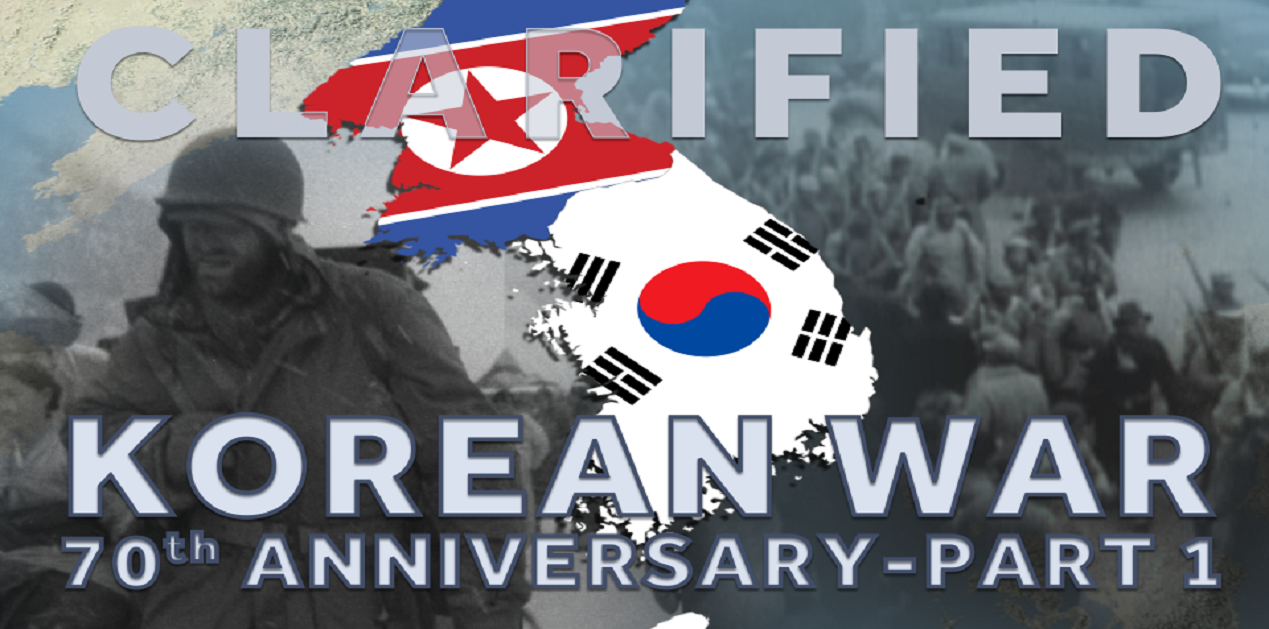
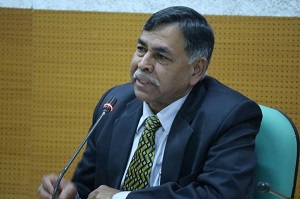
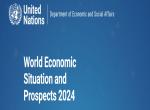
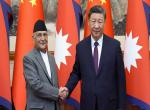


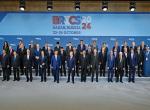

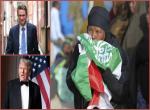
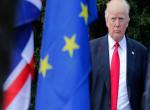
Post new comment